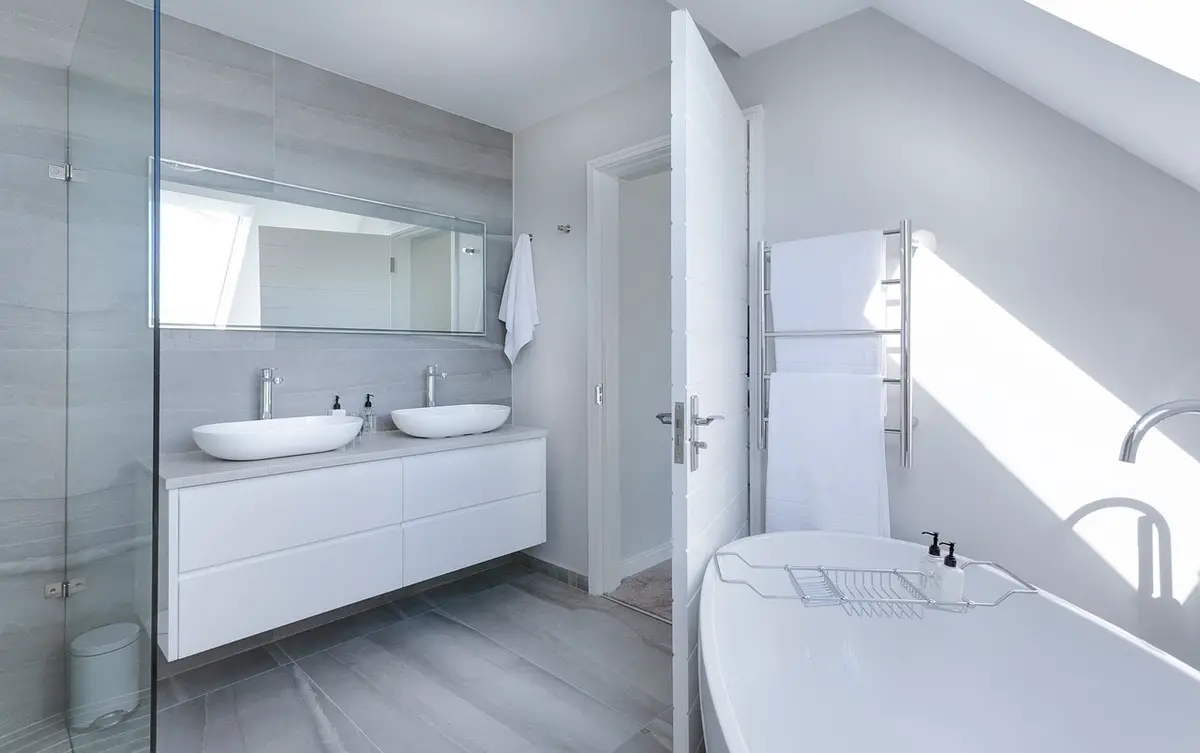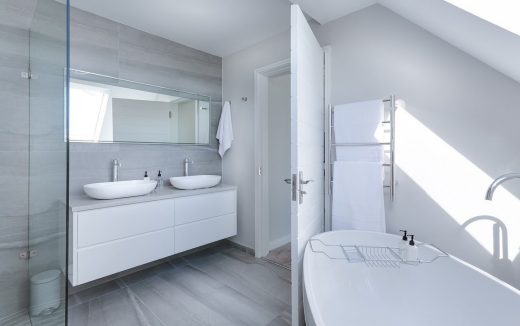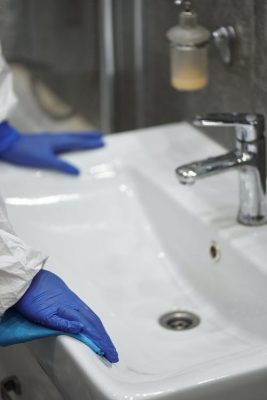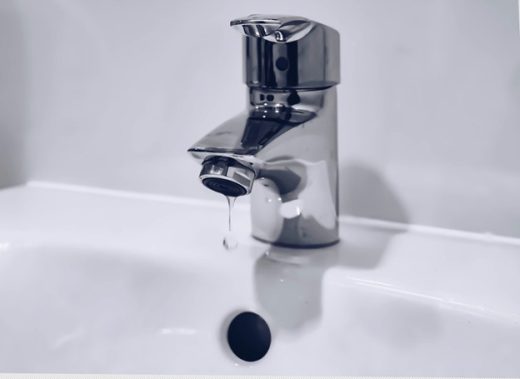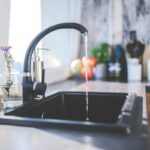Ultimate guide to unclogging your toilet, tub, and pipes, Online property plumber advice, Home maintenance firm
Ultimate Guide to Unclogging your Toilet, Tub, and Pipes Article
19 April 2023
The Ultimate Guide to Unclogging your Toilet, Tub, and Pipes: Tips from your award-winning Hamilton Plumbers at Rescue Rooter.
The Ultimate Guide to Unclogging your Toilet, Tub, and Pipes
Picture this: it’s a busy morning, you’re getting ready for work and you’re in a hurry to make it on time. You flush the toilet and suddenly, the water starts to rise, and it won’t stop despite your frantic jiggling of the handle.
There’s no telling how long it will take you to fix the issue or if you can even fix it at all. But before you start to panic, take comfort in the fact that you are not alone. This is a common issue that happens to millions of people, and we are here to guide you on how to unclog a toilet. Rescue Rooter Hamilton Plumbers has seen it all, and our licensed and insured professionals have the experience and knowledge to help you out. In this blog, we will provide you with practical tips on how to unclog a toilet, so you can be back to your day in no time.
The first thing that comes to most people’s minds is to use a plunger. How to plunge your toilet? The plunger is your go-to tool for unclogging a toilet. First, close the toilet’s water valve so that water does not flow in during the process. If you don’t know where it is, look for a small valve on the wall behind the toilet. Next, press the plunger down gently to create a vacuum, and then lift it up with force to create suction. Keep doing this until the water starts to drain. Remember to avoid plunging too hard, or you risk splashing water. If the plunger is not working, move on to other methods.
Use a Toilet Snake
Also known as an auger, a toilet snake is a long, flexible cable with a coiled end. It’s a handy tool in those cases where the toilet is clogged with hard objects like toys, or it needs some extra power to push larger items out of the way. Start by inserting the snake into the drain, and turn the handle clockwise. Keep twisting and pushing the snake up and down until the clog is cleared. Pull the cable out, and then flush the toilet a few times to make sure the clog is gone.
Try a Dish Soap and Hot Water Combination
A soapy mixture of hot water and dish soap can also be a solution to unclog a toilet. Start by adding a tablespoon of the soap to the toilet bowl, and then follow it up with boiling water. Give it a few minutes to work its way down the drain, and then flush the toilet. This method can work if the clog is caused by grease or other organic materials.
Use Caustic Soda
Caustic soda or sodium hydroxide is a strong base that can dissolve organic material clogging your toilet. However, it requires caution as it can burn your skin and clothing. Start by putting on some protective gear, like rubber gloves and goggles. Then, pour some water into the toilet bowl to moisten the drain, followed by a cup of caustic soda. Give it 20 minutes or so to work, and then flush the toilet several times. Avoid using caustic soda as a first option, especially in plastic pipes, as it can melt the pipes.
Call the Professionals
If none of these methods work, or if you don’t feel comfortable doing it yourself, it’s time to call in the professionals. Your Hamilton Plumbers at Rescue Rooter have the experience and the proper equipment to unclog any toilet. They are efficient and offer their services at an affordable price. By using professionals, you are assured that the issue will be taken care of, and you can resume your everyday life.
Unclogging a toilet can be a stressful and frustrating experience. However, with the tips provided in this blog, you can address the issue confidently. Remember to be careful when using chemicals such as caustic soda, and always consider reaching out to professionals, like the Hamilton Plumbers at Rescue Rooter, if none of the methods work. Hopefully, you now have a good idea of what to do when nature calls and the toilet decides to act up. Good luck, and happy unclogging!
How to Unclog a Pipe: A Simple Guide for Homeowners
Having a clogged pipe in your house or workplace is a common issue that can be both frustrating and inconvenient. It can result in slow drainage, bad smells and even flooding. The good news is that there are simple steps you can take to try and unclog a pipe yourself before calling a plumber. In this article, we’ll discuss what to do when your pipe is clogged and when it’s time to call in the professionals. We’ll even share some tips on the best plumbers, like Rescue Rooter Hamilton Plumbers, who can help you out when needed.
Before we dive into how to unclog a pipe, it’s essential to know what causes a pipe to clog. Build-up of grease, soap, hair, and foreign objects are typically the culprits. You can prevent clogging by running hot water and using a drain cleaner once every two months, which will ensure your pipes remain clog-free. However, suppose you do end up with a clogged pipe. In that case, here are some steps to follow:
Step 1: Turn off the water supply
Before attempting to unclog your pipe, it’s essential to turn off the water supply to the affected area. You should locate the main water shut-off valve and turn it off to avoid any water overflow.
Step 2: Use a plunger
A simple plunger can be a homeowner’s best friend when it comes to unclogging pipes. Ensure that you have a good seal around the drain and push up and down on the plunger several times, creating suction. Repeat this process until the clog is removed.
Step 3: Try using a snake
If a plunger doesn’t work, try using a snake, which is a flexible tool designed to navigate through pipes, loosening and removing debris. Feed the snake into the drain until you encounter resistance. Then, turn the handle clockwise to pierce through the blockage.
Step 4: Chemical Cleaners
If neither the plunger nor the snake works, you can try chemical cleaners. There are plenty of cleaning products on the market, which you can use to dissolve the blockage. However, please use these products with caution and follow the manufacturer’s instructions. Chemical cleaners can harm your skin, and eyes, and even damage your pipes.
When to Call a Plumber:
Sometimes, you will be unable to unclog your pipes, and that is when you need to call in the professionals. When should you call a plumber?
Your home remedy methods have been unsuccessful
If you have tried plunging, snaking, and using chemical cleaners, but the clog is still present, it’s time to call a plumber.
Multiple clogged fixtures
If more than one fixture in your home is clogged, it signifies your main sewer line is clogged. In this situation, you must stop running the water immediately and call a plumber. This typically requires the use of specialized equipment, which only a licensed plumber can possess.
Unusual smells
If you notice an unpleasant sewage smell emanating from your drain, this is an indication that there could be a more severe problem developing. Call a plumber to have your drains inspected and find the root cause of the issue.
In conclusion, having a clogged pipe is a common plumbing issue that can cause discomfort and inconvenience. There are DIY methods that homeowners can use to try and unclog their pipes, such as plungers and snaking, as well as chemical cleaners. However, when all attempts have failed, it’s always safer to call in licensed experts like the Rescue Rooter Hamilton Plumbers. They have the technical expertise and specialized equipment necessary to identify the root cause of the problem and provide an effective solution. By following the steps discussed in this article and knowing when it’s time to call a professional, homeowners can effectively handle clogged pipes and keep their plumbing systems in good working order.
What to Do if Your Tub Isn’t Draining
We’ve all been there: you’re showering, enjoying the warm water when you look down and realize that the tub isn’t draining properly. It’s an annoying problem that can ruin your shower experience, but luckily, it’s a fairly simple fix. In this blog post, we’ll go over what you can do if your tub isn’t draining, so you can get back to enjoying your showers in no time.
Check the Drain:
The first step in clearing a clogged bathtub drain is to physically examine the drain itself. Remove the drain cover if necessary and look for any debris, such as hair or soap scum, that may be obstructing the pipe. Use a pair of needle-nose pliers or a bent coat hanger to gently remove anything that you see. If the blockage is too deep, however, it might require a little extra work.
Try a Plunger:
If your drain isn’t completely backed up, try grabbing a plunger. Make sure there is a little bit of water in the tub around the drain. This will provide suction for the plunger. Position the plunger over the drain and give it a few forceful plunges; as long as there isn’t a more serious blockage, this should be enough to dislodge any clogs.
Use a Drain Snake:
If the blockage is deeper in the pipe, you may need to use a drain snake. A snake is a flexible metal wire that you insert into the drain and push until it clears the blockage. Make sure you wear gloves and follow the instructions carefully, as the wire can be sharp.
Try Baking Soda and Vinegar:
If you prefer a more natural approach, you can try using a mix of baking soda and vinegar to break up the clog. First, mix about 1/3 cup of baking soda with 1/3 cup of vinegar in a measuring cup. The mixture will fizz and bubble, which is how you know it’s working. Quickly pour the mixture down the drain and let it sit for at least an hour before flushing with hot water.
Unclogging a toilet, tub, and pipes – Call a Professional
If none of the above suggestions work and your tub still isn’t draining, it might be time to call in a professional plumber. Especially if you have an older house or outdated plumbing, you could have a more complex issue that requires skilled hands to solve. Don’t hesitate to seek help if the problem is persisting.
A clogged drain is an annoying problem, but it’s one that can be solved with a little bit of elbow grease or a professional plumber. If you’re experiencing a backup in your bathtub, try these steps to clear the drain: inspect the drain, try a plunger, use a drain snake, try the baking soda and vinegar, or call in a professional if necessary. We hope these tips will help you fix the issue and get back to enjoying your showers in a timely manner.
Comments on this ultimate guide to unclogging your toilet, tub, and pipes – plumbing advice article are welcome.
Plumbers Articles
Plumbers Posts
How plumbing factors into your new home build
Tips for hiring a commercial plumber
How to choose the best and trusted plumber
Building Articles
Residential Architecture Articles
Comments / photos for the Ultimate guide to unclogging your toilet, tub, and pipes advice page welcome

